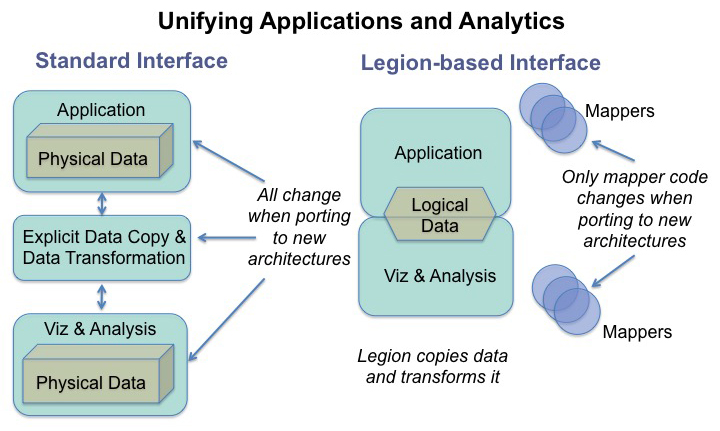Unified Data-Driven Approach to Programming In Situ Analysis and Visualization (UDDAP)
Contact

Amid today’s challenges of constrained power budgets and rapidly changing processor and system architecture designs, this project aims to study a unified data-driven approach for programming applications and in situ analysis and visualization.
The programming model used is the Legion Programming Model and Runtime. We are implementing various in situ visualization and analysis algorithms using this model:
- VTK’s existing algorithms and execution models
- Image generation through ray tracing as both a rendering and analysis infrastructure
- Topological and statistical data transformation techniques that reduce data while maintaining properties of interest for exploratory post-processing, analysis, and archival storage
- Sublinear and streaming techniques that can be deployed to provide an efficient, adaptive, data-driven control-flow mechanism in a unified framework. Our studies are driven by the needs of common operations and those of three application areas: combustion, cosmology, and climate.
"A Unified Data-Driven Approach for Programming In Situ Analysis and Visualization (pdf)" poster
“Towards Asynchronous Many-Task In Situ Data Analysis Using Legion.” High Performance Data Analysis and Visualization Workshop 2016, Philippe Pebay, Janine Bennett, David Hollman, Sean Treichler, Pat McCormick, Christine Sweeney, Hemanth Kolla, Alex Aiken.



